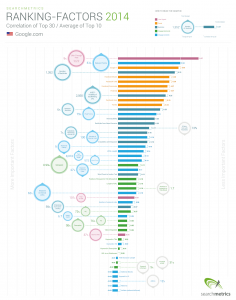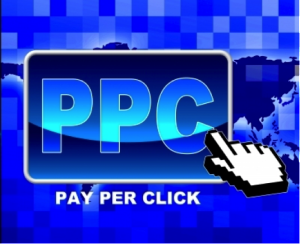— May 14, 2019
Let me ask you a question. Have you ever had a client that, no matter what you did for them, just could not find the value in what you offered? They would complain, they wouldn’t be happy, they just did not see the big picture of what you were providing. We often associate this with money because many people perceive value as only money, but it’s much more than that.
When you think of the value brands, we think about going to the store. A lot of the time, the “value brand” is associated with the generic or store brand, or the cheaper brand. What you have to think about is that value is in the eye of the beholder. It’s not always about money. It could be about time, it could be about stature. Value means different things to different people. So when it comes to price, the value or price of something is what it costs you plus whatever it is that you decide to mark it up.
What Is Value?

Value, in the form of its benefit, is what value it adds to the customer’s business. That’s what I was talking about when I mentioned the unhappy customer. Do they feel the value that you’ve added? Some people are so fixated on price that they can’t see that. It’s your job to try to convince them. If you can’t, well, I’ve talked about it before, but sometimes you just have to fire a client.
Let’s look at value in the sense of, how can you communicate it better with your audience? Value-based pricing in its most literal sense implies basing the price on the product benefits perceived by the customer instead of on the exact cost of developing the product. Obviously, we understand that some of these have to make a profit, right? But some people are willing to pay more for value. In that case, it could be that they value their time or they value their money.
Value Is In The Eye Of The Beholder

The people that value their time more than money, at least in the service business, would buy a done-for-you-service. In other words, I don’t have time to learn how to do this. They want convenience. Get it done, do it right and I’m more than happy to pay you for that. That’s what done-for-you-services does. As long as they feel the perceived value, they will continue to pay you. Now, the people that value money more than time tend to want to do it themselves. So they’ll want to learn. They’ll maybe want to get in there and figure it out for themselves because they think that their time is not as valuable or maybe they have a lack of resources of money to be able to pay for it.
What you have to do, first and foremost, is ask a lot of questions. Ask what value means to that person… but you can’t be so blunt by just asking, “What does value mean to you?” You have to ask questions and kind of interpolate their answers in a way that’s going to give you the answer, what they value.
Let me break it down to the three different things. There are three ways to show benefit.
Time

The first one, does it save time? If it saves time, then people are willing to pay for convenience. An example of that is in home food delivery. How hard is it to get in your car and go down the street to wherever it is, the local burger joint for example, and sit there and wait and pick up your burgers and bring your dinner home? But some people are more than willing to pay an additional fee to something like Uber Eats or Grubhub or something like that to go pick up their food and bring it to them. Now, that’s always been around: Chinese food, pizza delivery. It’s kind of built in. But what about the places that don’t deliver? People are willing to pay for that convenience of not having to get in their car where they can just stay home and somebody else will deliver the food. That’s a convenience thing. It saves them time.
They don’t value their money as much as they do their time. They’re willing to pay for that premium service. The question is, is it that people don’t have the time to learn and they want to do it themselves in business? That’s where the done-for-you-service comes in. Or they also don’t have the money to pay for staff or somebody else to do it for them in their business. That’s where your done-for-you-service comes. So, can you communicate the fact that this is going to save you time and that time is valuable? It’s a resource that is going to benefit your business. The question is, will it be valuable to them in the long run? Can they make more money off the time they save, than the money they spend?
ROI

The next part of it is ROI, or return on investment. Now, in my business, I try to convince my customers that marketing should never be an expense. It should always be an investment. I say that you spend a dollar and you should make three, and I explain it this way: the first dollar is to pay for the service, the second dollar is to pay for your time, and the third dollar is your profit. So if I can show you how to do something over time in marketing and you learn how to do it, then you can do it yourself over and over again. Then that $ 3 now becomes a dollar for the service and you make $ 2. That becomes the investment where people are willing to learn, as long as you can show them there’s an initial investment where you’ll make some profit and over time you’re going to make more. So they understand that it takes money to make money.
They get the point that they need to invest, and they’re willing to invest in themselves or they’re willing to invest in their staff, or they’re willing to invest in some kind of program where they feel like they’re going to get a return on that investment. It’s your job to let them know what that is.
The Combo Platter
The last type of value is what I call the combo platter. It’s a little bit of cost, and a little bit of time. Think of Amazon. Amazon gives you the ability to compare low prices and you get it fast. When you subscribe to a service like Amazon Prime, you not only can get the lowest price product, but you can get it fast because they’ll deliver it to you in one or two days.
It’s kind of a combo platter. That’s something in the business world that we call the subscription model.
Many things have gone from a one-time purchase to a subscription. Software is no longer is delivered on a CD in a box, you subscribe to it. With TV, you can subscribe to the channels that you want on Hulu, or you can just get Netflix or whatever. The subscription model gives you value because it’s less expensive and it gives you exactly what you want when you want it. That’s the combo platter. It’s part low price, and part saving you time.
Final Thoughts

As you start to communicate these things, the most important thing you have to realize is, you need to continue to build and grow relationships with your customer in order to understand their perception of value so that you can deliver it the best way possible.
I would love to hear your thoughts on this. Comment below and share your thoughts, ideas or questions about showing the concepts presented. Have you had to overcome any of the presented concepts? What worked and what did not live up to expectations? Do you have any ideas or advice you could share?
Business & Finance Articles on Business 2 Community
(27)








